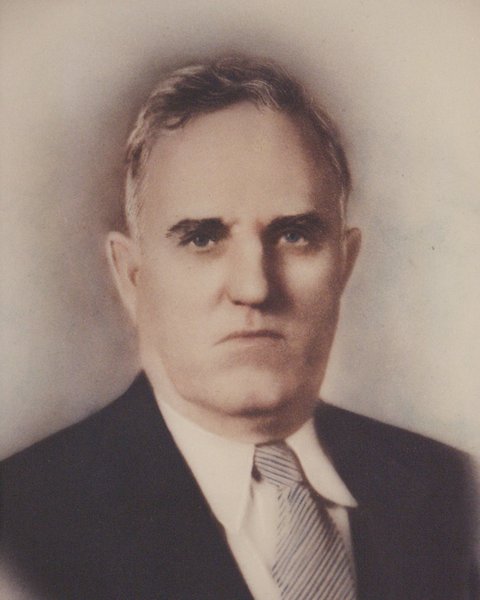
Class III
James Feagin Tompkins
James Feagin Tompkins was the first President of the modern Arkansas Farm Bureau Federation. Mr. Tompkins was born in Bullock County, Alabama on September 28, 1879. He grew up in a farm family and attended Alabama Polytechnic College, where he majored in agriculture. In 1904 Mr. Tompkins was employed as a farm manager on a farm near Lake Village, Arkansas. In 1906 he started a dairy of his own but after having undergone three major floods in Southeast Arkansas, he decided to move to Northeast Arkansas. He made a trade with Three State Lumber Company to develop a tract of cut-over timber land near Burdette. There were very few men who had a vision to believe that this cut over swamp land could become prime row crop farming land—Mr. Tompkins was one of these men. In early 1914 he moved to Burdette with his family and with fifty other families to begin work in converting 3,200 acres of swamp cut over land into what became Burdette Plantation, Inc. He joined with others to create drainage districts and served as a Commissioner on several Drainage Boards. Mr. Tompkins did not ignore the other requirements which go to make a good community. He helped organized the Burdette School system and was President of the School Board. Mr. Tompkins espoused the establishment of experiment stations throughout the state. He recognized that the University of Arkansas had limited funds so he hired his own plant breeder who cooperated with the University. He worked industriously to get farmers to cooperate with each other. It was through his efforts that on April 28, 1931 the Articles of Incorporation were filed to establish the present Arkansas Farm Bureau Corporation. During the Depression, as President of the new Arkansas Farm Bureau Corporation, Mr. Tompkins travelled all over Arkansas at his own expense to organize Farm Bureaus throughout the state. It was during this difficult time that Mr. Tompkins demonstrated his real ability. He made a number of trips to Washington to work with the members of the Congress and with the farm leaders of the United States. Prior to his death in 1936, he had helped lay the groundwork for the Congress to enact the Agricultural Marketing Agreement Act in 1937, and also the Agricultural Adjustment Act in 1938. These are the basic statutes along which all of our present day agricultural laws are founded.
